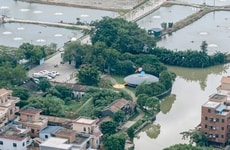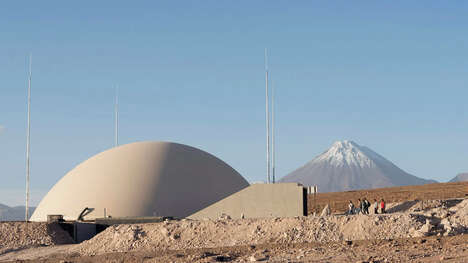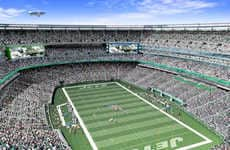
The Phoenix International Media Center Looks Like a Sports Stadium
Meghan Young — August 22, 2011 — Art & Design
References: biad-ufo.cn & coolhunting
With the recent rapid growth and urbanization happening in China spurred by the 2008 Olympics, it's clear that things have not slowed down yet; the latest architecture project, Phoenix International Media Center, has met its halfway mark in construction. The project, which will be completed in 2012, is as impressive a structure as the Universaide Sports Center or even Herzog and De Meuron’s Bird’s Nest Olympic Stadium. Funnily enough, the Phoenix International Media Center is not actually a stadium, even though it looks like one.
Designed by BIAD UFo, a firm based in China, the Phoenix International Media Center is actually being built for a powerful and large satellite TV provider. Reminiscent of a sea sponge or jellyfish, its netted donut shape is also rather futuristic.
Designed by BIAD UFo, a firm based in China, the Phoenix International Media Center is actually being built for a powerful and large satellite TV provider. Reminiscent of a sea sponge or jellyfish, its netted donut shape is also rather futuristic.
Trend Themes
1. Rapid Growth of Urbanization - New opportunities exist for architects to pioneer structures in megacities like Shanghai and Beijing to accommodate the rapid growth of urbanization.
2. Futuristic Architecture - There is a growing trend towards futuristic architecture and designs, creating ample opportunities for architects to embrace inspiration from nature and experiment with novel constructions.
3. Media Spaces - Media companies around the world are increasingly looking to design and build visually compelling spaces with innovative architecture to accommodate their large and diverse teams, and to make their offices a distinct and visually appealing part of their brand.
Industry Implications
1. Architecture - Architecture and construction firms have immense opportunities in megacities like Shanghai and Beijing, where rapid urbanization and growth means the need for new and innovative buildings and structures.
2. Media and Entertainment - Media companies worldwide can explore innovative ideas for their offices, studios, and event spaces, creating uniquely recognizable visual landmarks and environments for their talent and audiences.
3. Tourism - Innovative and futuristic architecture that captures the imagination of visitors and tourists has the potential to boost tourism in high-growth areas like Beijing and Shanghai, bringing significant benefits to local economies.
4.3
Score
Popularity
Activity
Freshness























